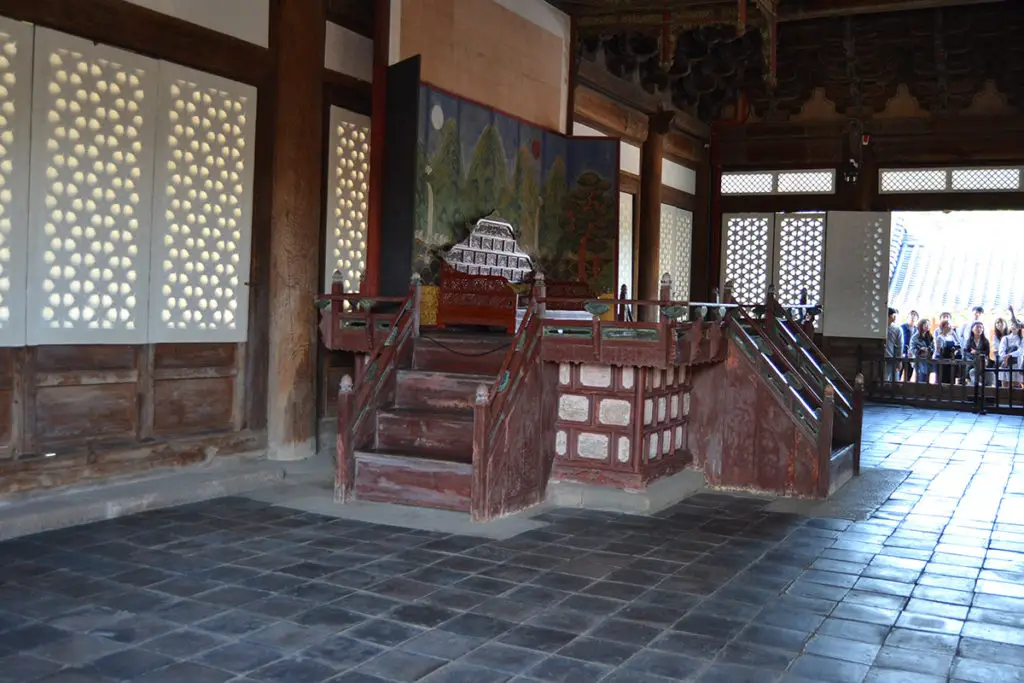Last Updated on 24.07.2023 by Iliyan
The Changgyeonggung Palace is a must see when visiting Seoul. This is the third palace built by the Joseon dynasty. It is located nearby Changdeokgung, and also close to other attractions in Seoul. Changgyeonggung, together with Changdeokgung Palace, are known also as “Donggwol” or the “Eastern palaces”.
Contents
Changgyeonggung Palace
The palace is situated in the heart of Seoul. It was built for the first time by the 4th ruler of the Joseon dynasty, King Sejong, for his father – King Taejong. In spite of that, the queen has also lived inside the complex and it is no coincidence that it was significantly smaller in size compared to the king’s one. The halls are also quite smaller and relatively less in count. Through the years, the palace has sheltered royal wives, as well as concubines, and it was also used for offices of the government departments.
The other palaces of the Joseon dynasty have been built in compliance with the strict royal principles for design and have a northern-south orientation. The Changgyeonggung palace has been built differently and it is distinguished by the eastern-west orientation, which is common during the time of the Goryeo dinasty. The main throne hall Myeongjeongjeon, Myeongjeongmun Gate and Honghwamun Gate look to the east towards the Naksan Mountain, while the structures during the time of the Joseon dynasty looked to the south.
Honghwamun Gate
This is the main palace gate. It literally means “promoting harmony”. It has been built for the first time during 1484, but during the time of the Japanese invasion, it was completely destroyed. Later on, through the years, the gate has been recovered.

Myeongjeongjeon Hall
This is the throne hall and the main hall where the official royal rituals were conducted – such as a coronation, greeting ceremonies and receptions. Initially, the hall was built to serve as a residence for the queen, not for the official events of the king. In the picture, you will see the royal place, settled in the center, and behind it, a folded painting with a sun, a moon and five summits. The sun and the moon are for the king and the queen, and the five summits mean “the five elements” or the whole nation. The painting means national prosperity and welfare for the people.

In the palace complex exist also many other chambers used as a part of the residence spaces for the royal family.
Yanghwadang Hall
Yanghwadang Hall was part of a king or queen’s living quarters. The building burned down in 1830, but it was rebuilt in 1834.

Hwangyeongjeon Hall
Hwangyeongjeon Hall was built in 1484, then destroyed due to fire during Japanese invasion of Joseon between 1592-1598. In 1616 was rebuilt, but again burned down in 1830, and reconstructed in 1834. It was used as a a king or prince’s living quarters.

Chundangji Pond
The garden is not missing in this palace. This little pond consists of two parts. It was made by the Japanese in 1909 but during 1986 it was renovated in the traditional Korean form.

Daeonsil (Great Greenhouse)
The greenhouse represents a closed botanical garden and it is the first one made in a western style in Korea. It was built by the Japanese colonial government in 1909 along with a zoo in the palace. The project is the work of a Japanese designer and it was built by a French company. The building is a beautiful mix of a stone frame and a tree, and its appearance has been covered with glass.

During the time of the Japanese occupation from 1910-1945, the complex was turned into a zoo and a botanical garden. In 1983, the Korean government removed the zoo and began working for the restoration of the palace, to bring back his initial appearance and beauty. However, it’s one of the best parts of visiting the Changgyeonggung Palace in Seoul and must-see on your trip to the city.
Changgyeonggung Palace Entrance Fee
- A combined ticket for all palaces: Changdeokgung Palace (including Huwon Secret Garden), Changgyeonggung Palace, Deoksugung Palace, Gyeongbokgung Palace and Jongmyo Shrine: 10,000 ₩
- Adults: 1,000 ₩
Visiting the Changgyeonggung Palace is one of the best things you can do in Seoul. It offers a wonderful insight into Korean culture and heritage.



